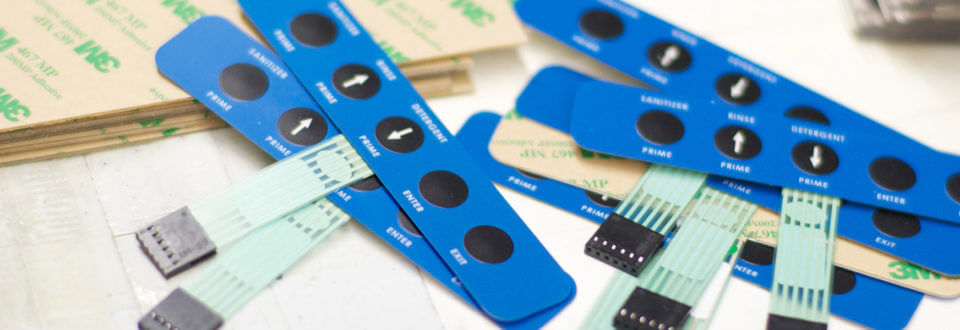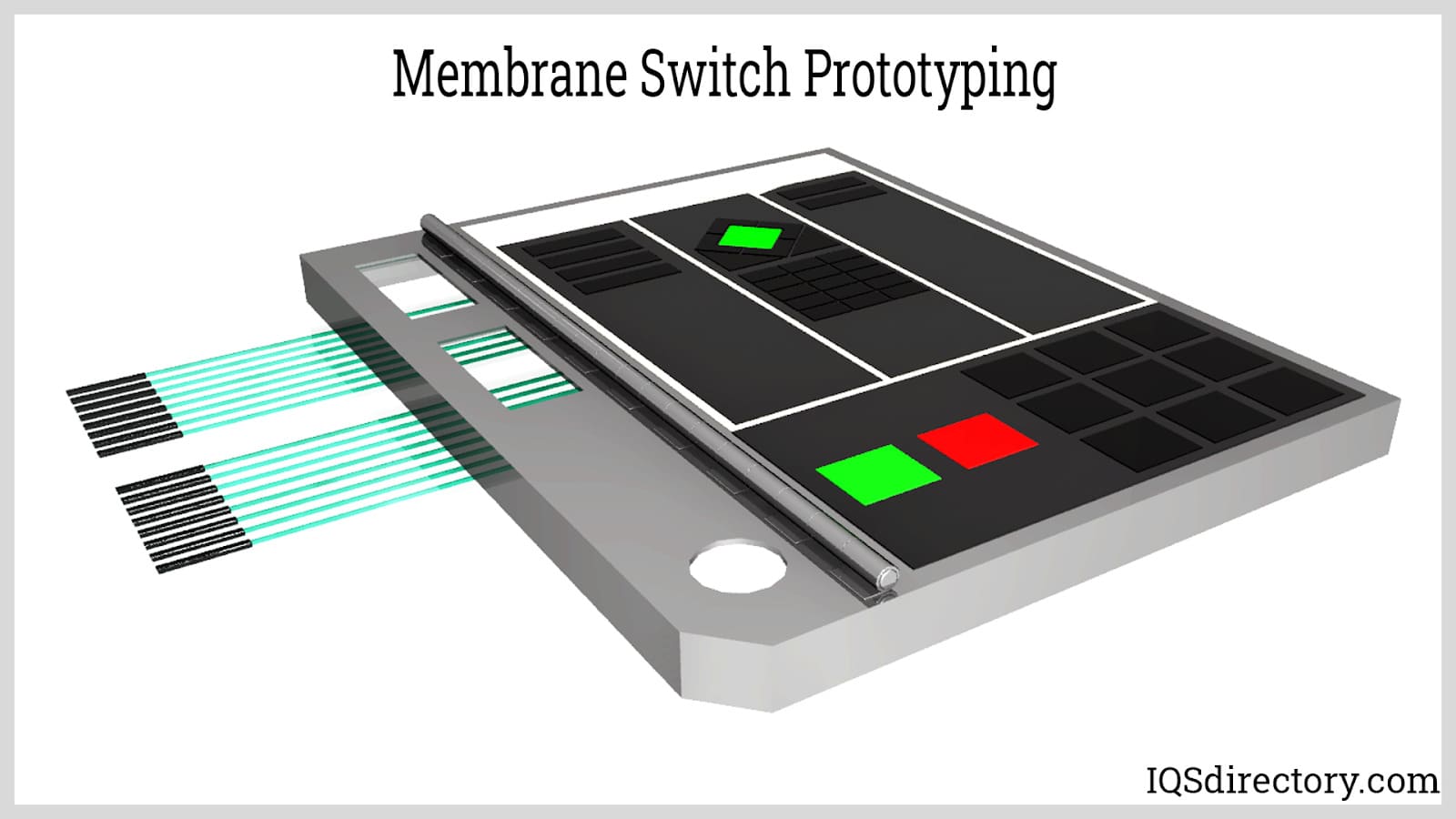The Advantages of Making Use Of Membrane Switches in Customer Electronics
Membrane switches are significantly acknowledged for their considerable benefits in customer electronic devices, particularly in enhancing customer communication and improving production processes. The versatility in layout allows for tailored services that meet varied consumer demands.
Improved Individual Experience
In today's competitive landscape of customer electronics, enhanced individual experience is paramount; almost 85% of users prioritize instinctive user interfaces. Membrane layer switches play an essential role in accomplishing this degree of usability.
The tactile responses provided by membrane layer switches is crucial for guiding individual activities, guaranteeing that commands are registered precisely. This responses system decreases errors and enhances customer satisfaction, cultivating a favorable partnership between the customer and the tool. The personalized nature of membrane switches over permits producers to customize user interfaces to certain customer requirements, making devices extra available and welcoming.
In addition, membrane layer buttons can integrate backlighting and visuals overlays, further enhancing exposure and use in varied settings. This adaptability guarantees that tools continue to be useful and user-friendly, no matter the setting. In general, the combination of membrane layer changes into customer electronic devices considerably improves user experience, driving brand loyalty and satisfaction in a significantly open market.
Cost-Effective Production
Consumer electronic devices manufacturers are regularly looking for ways to balance quality with cost, and membrane layer buttons use a compelling solution for cost-effective manufacturing. membrane switch. These components are naturally simpler than conventional mechanical buttons, which lowers both production expenses and intricacy. The lightweight layout of membrane changes enables lower shipping expenditures and less complicated combination into portable tools, further enhancing their allure in an open market

Makers can generate membrane buttons in high volumes, benefiting from economic climates of scale. This mass manufacturing capability makes certain regular high quality while considerably reducing per-unit prices. Furthermore, the materials made use of in membrane layer switches, such as polyester and polycarbonate, are frequently less costly than those needed for conventional switch technologies, adding to overall price savings.
The manufacturing process for membrane layer switches typically requires less steps and much less labor compared to other button types. This structured method not just reduces labor expenses yet additionally speeds up time-to-market, allowing companies to react quickly to customer need. As a result, the mix of lowered material costs and effective production procedures settings membrane switches over as a smart investment for suppliers aiming to deliver top quality customer electronics at competitive rate factors.
Layout Flexibility and Modification
While typical mechanical buttons often enforce limitations on design because of their bulk and needed mounting devices, membrane switches provide unmatched versatility and customization choices for consumer electronic devices. This innovative modern technology permits designers to develop sleek, low-profile interfaces that can perfectly integrate into different item appearances, from smartphones to cooking area home appliances.
Membrane layer buttons can be created in practically any type of form or size, making it possible for makers to tailor the design to certain ergonomic and useful demands. This versatility not only boosts customer experience but additionally permits for imaginative designs that align with brand identity. Furthermore, making use of printed graphics on membrane layer switches provides the possibility for elaborate designs and lively colors, which can be easily customized without substantial cost implications.
In addition, membrane layer switches can incorporate multiple functionalities right into a single layer, decreasing the demand for several elements and simplifying setting up processes. This streamlined style strategy minimizes area and weight, making it suitable for small consumer electronics. Generally, the design adaptability and personalization abilities of membrane click over here switches over encourage producers to innovate, ultimately leading to more easy to use and engaging products.
Toughness and Dependability
As innovation proceeds to develop, the toughness and dependability of membrane buttons have actually come to be crucial considerations for makers in the customer electronics market. Membrane layer switches are developed to stand up to extreme ecological problems, including temperature level variations, dampness, and dirt direct exposure. Their durable building frequently involves multi-layered materials that give a reliable obstacle versus contaminants, guaranteeing longevity and consistent performance.
Along with environmental resistance, membrane layer switches offer remarkable mechanical reliability. Unlike traditional mechanical buttons, which might wear out with time, membrane layer changes utilize a closed layout that reduces the threat of mechanical failing. The lack of moving parts not just enhances their life-span but also reduces wear and tear, making them suitable for high-usage applications.
Moreover, membrane switches can withstand a substantial number of actuations without loss of performance, usually exceeding millions of cycles (membrane switch). This longevity converts to lower substitute costs and decreased downtime for makers and consumers alike. In general, the mix of environmental resilience and mechanical reliability makes membrane layer switches a tactical option for customer electronics, making sure that tools stay functional and reliable throughout their designated lifespan

Streamlined Item Growth
The sturdiness and dependability of membrane changes substantially add to structured item advancement in the customer electronic devices sector. By integrating these switches early in the layout procedure, suppliers can decrease the intricacy and number of elements called for in their items. Membrane switches are light-weight and small, permitting more effective room use within tools, which can cause simplified setting up procedures.

The convenience of making membrane layer buttons likewise plays an essential role in item development. With modern-day printing methods and products, manufacturing can be scaled effectively, lessening preparations and minimizing waste. This leads to lower manufacturing prices, improving overall success.

Final Thought
In conclusion, membrane switches over substantially boost consumer electronic devices by giving an enhanced user experience, affordable production processes, and flexible design choices. The combination of membrane changes stands for a strategic option for producers seeking to maximize item layout and performance.
Membrane buttons are significantly identified for their significant advantages in see consumer electronics, visit site especially in improving individual communication and enhancing production procedures. Additionally, the materials used in membrane buttons, such as polyester and polycarbonate, are commonly much less expensive than those required for traditional button innovations, adding to general expense savings.
The manufacturing process for membrane layer switches over normally needs less steps and less labor compared to various other switch types. Unlike traditional mechanical switches, which might use out over time, membrane layer switches over use a closed style that lessens the risk of mechanical failure.In final thought, membrane layer switches over substantially enhance consumer electronics by providing an enhanced individual experience, cost-efficient manufacturing processes, and versatile design choices.